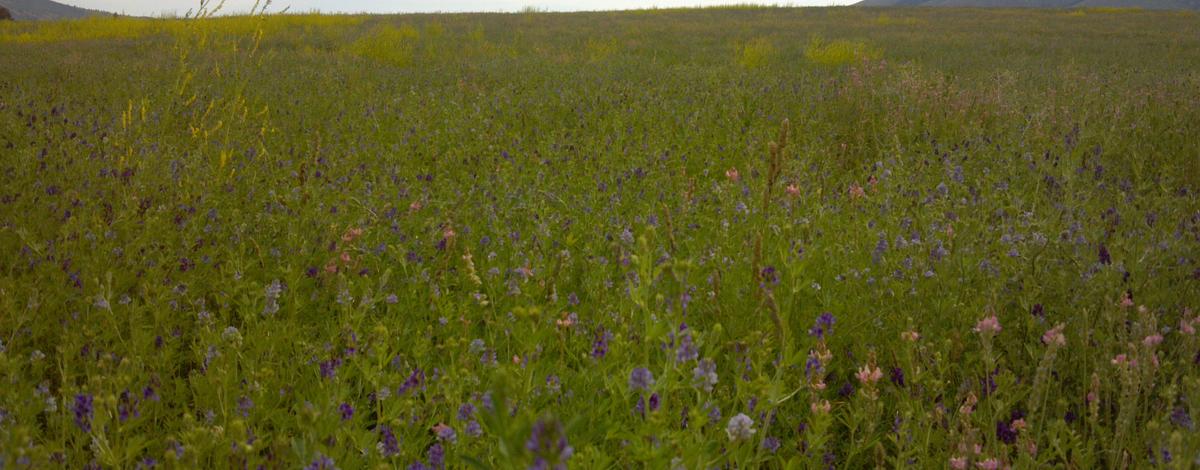Southeast Idaho Habitat Improvements: And the Partnerships behind it.
by Carl Frey, Mule Deer Initiative Biologist
All year long the deer hunter in all of us dreams of crossing paths with a large mule deer buck during the season. Or sometimes our daydreams focus on the rush of hearing the wing beats of a sharp-tail grouse getting up after a spectacular point that gets your heart going. In order for us to hunt, work our dogs and pass ourhunting heritage down to our kids we all know that we need game to hunt. There is one word that puts birds in the field, and that is HABITAT!
In the Southeastern portion of Idaho, upland bird hunting is an outdoor pursuit that a majority of the hunting population participates in and values greatly. This drive to create better habitat for a whole gamut of species has driven local wildlife groups to contribute to a couple of great wildlife conservation based positions. Currently we have two Pheasants Forever-Mule Deer Initiative biologists on the ground working in partnership with private land owners, the United States Department of Agriculture (USDA)-Natural Resource Conservation Service (NRCS), the USDA Farm Service Agency (FSA), the US Fish and Wildlife Service (USFWS), and the Intermountain West Joint Venture (IWJV) to manipulate agricultural ground for the cause of producing quality habitat. This in turn produces more mule deer & upland birds to hunt.
These positions work primarily within the Cropland Reserve Program (CRP) and State acres for wildlife (SAFE) programs. Although these cooperative biologist positions are only in their third year they are accomplishing many beneficial projects for wildlife. Between the biologists they have improved wildlife habitat on 22,935 acres with CRP and 28,303.4 acres with SAFE. These positions are versatile because of the variety of agencies they work with, which allows them to leverage several different funding sources. This still allows them to help on smaller wildlife projects and offer a few different options for providing assistance to willing landowners. They have assisted in improving habitat on 7,287 acres with alternate non-federal funding sources.
Over 58,000 acres of wildlife habitat improved in three years is an impressive accomplishment, that’s more acreage than the SE region of IDFG has in Wildlife Management areas (WMA’s). You may ask yourself; what have these biologists done to improve the habitat for wildlife through these programs? With all the acres being transformed in Southeast Idaho we are having an impact on a landscape scale level for all species that use the sage step habitat. At a smaller scale we work with the landowners to reseed their tract with beneficial plants for all wildlife. We work with them to decide what plant species will benefit them and line up with the goals of the program. Working alongside landowners we help decide on the vegetative communities that they want to establish. Whether it is a native grass-forb mixture or a mixed stand of introduced grasses and forbs, either one will benefit wildlife. We then produce a conservation plan that will guide them through the reestablishment and comply with NRCS & FSA program guidelines. In the new seeding we plant new high quality bunch grasses for tall cover and several forbs, all which will help with brood rearing and forage. Throughout the process we will provide technical assistance through the weed problems, ground preparation, and making sure they get the seed in the ground correctly.
If CRP or SAFE doesn’t fit your needs, tell us what you want to do to improve wildlife habitat on your property. There are a lot of programs out there that will help landowners improve forests, rangeland and even croplands for the benefit of wildlife. If you are interested in benefiting wildlife on your land, please feel free to contact Carl or Hunter and they will help guide you through the process.
Carl Frey out of Blackfoot, Idaho works in Bonneville, Bingham, Bannock, Power and Cassia counties. He also works on the Department’s Mule Deer Initiative out of the Idaho Falls IDFG office. He can be reached by phone 208-880-1699 or email cfrey@pheasantsforever.org
Hunter Moyles out of Preston, Idaho works in Franklin, Bear Lake, Caribou and Oneida counties. He also works on the Department’s Mule Deer Initiative out of the Pocatello IDFG office. He can be reached by phone 208-221-6789 or email hmoyles@pheasantsforever.org


